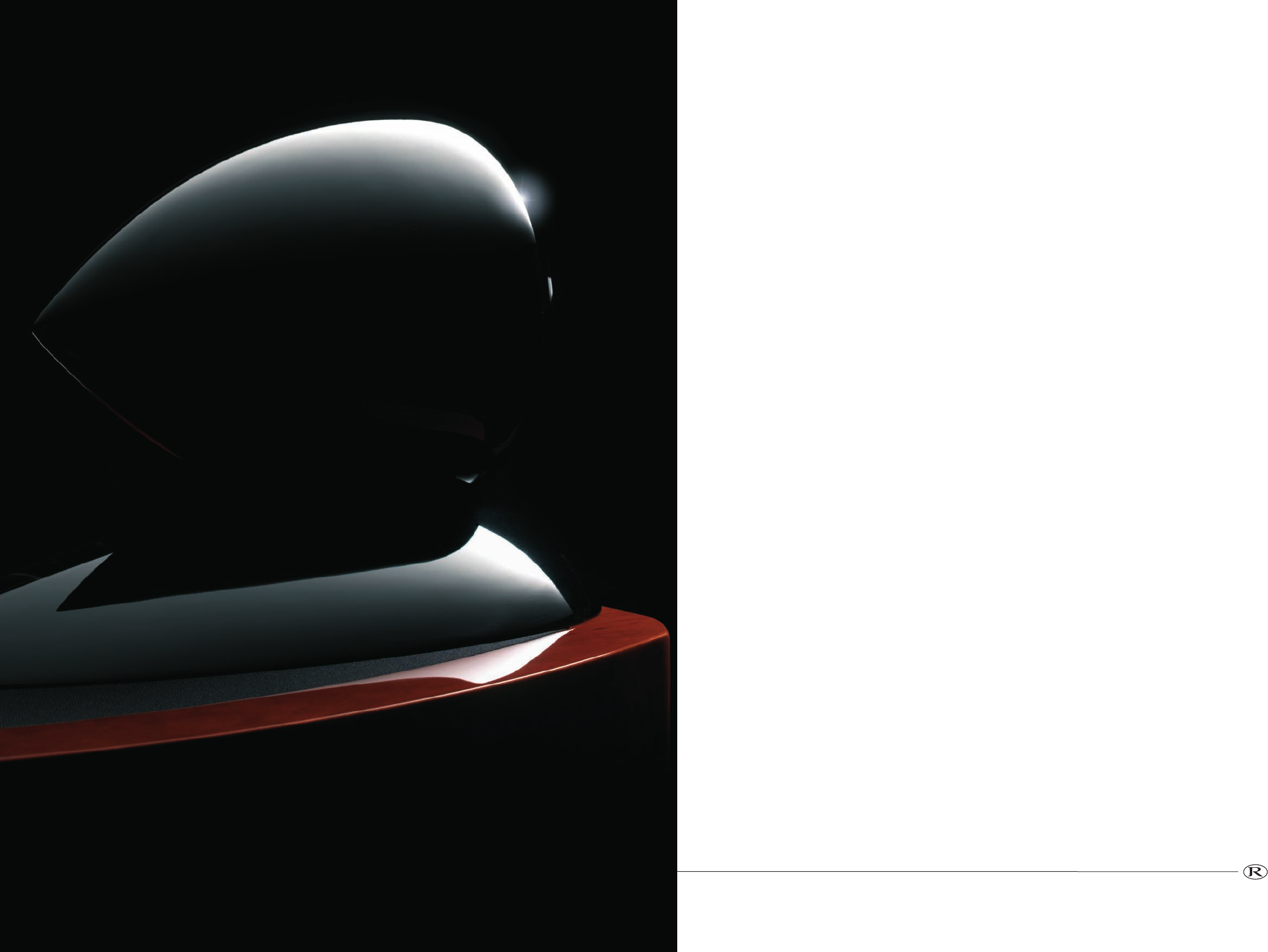
5
Since its formation in 1961, KEF has pioneered
many innovations in loudspeaker technology and
design. Your new Reference Series loudspeakers
contain one of the latest of these advances -
the KEF ‘Project Austin’ Uni-Q driver array.
In this innovative KEF design, not only are the
mid and high-frequency drivers on the same axis
(co-axial), but their acoustic centres are also on
the same plane (co-planar). The profile of the
mid-frequency driver’s cone modifies the
directivity factor (or ‘Q’) of the high frequency
unit such that both drive units have the same
directivity in the critical crossover region,
where they are operating at similar frequencies.
This unification of the ‘Q’ of the drive units lies
behind the name “Uni-Q”.
Now incorporated in many KEF loudspeakers,
the Uni-Q driver array yields immediate and
readily audible sonic benefits. With no sharp
discontinuity in ‘Q’ at the crossover frequency,
correct tonal balance is not confined to a
single ‘sweet spot’ in the listening room and
is extended to cover a far broader area.
With sound arriving in phase, the sound source
is brought into the sharpest possible focus.
With properly recorded material and as part of
a good quality system, well set-up, loudspeakers
with KEF Uni-Q can reveal the location of each
musical voice in the stereo image with pin-point
accuracy and with a much smoother response
being maintained off-axis - where most people
listen - than before.
The latest Uni-Q array implemented in this
range is a sophisticated device offering a
combination of wider bandwidth and wider
dispersion than its predecessor.
Both the midrange and high frequency drivers
have been symbiotically designed to take us one
step closer to the ideal of a controlled directivity
point source acoustic radiating system.
The 165mm (6.5in.) midrange section has a
shallow ‘Uni-Form’ cone profile which gives
excellent midrange performance but also
provides the optimum waveguide for the
coincidentally mounted tweeter.
This new two piece 25mm (1in.) titanium dome
tweeter has been developed utilising Finite
Elements Analysis techniques to provide
‘pistonic’ motion to a much higher frequency,
eliminating the need for a separate
hyper-tweeter.
It also features a vented pole piece,
increasing the air space behind the dome
providing an extended but smooth high
frequency performance whilst retaining ultra
wide bandwidth source compatibility:
DVD-A/SACD.
Introduction


















